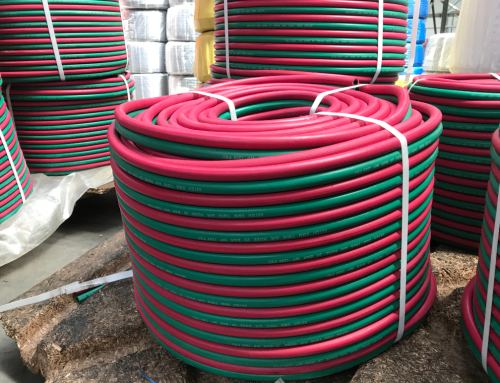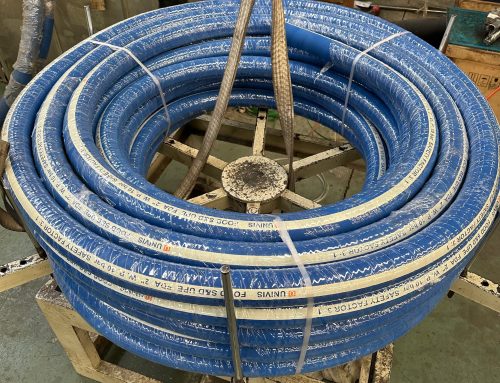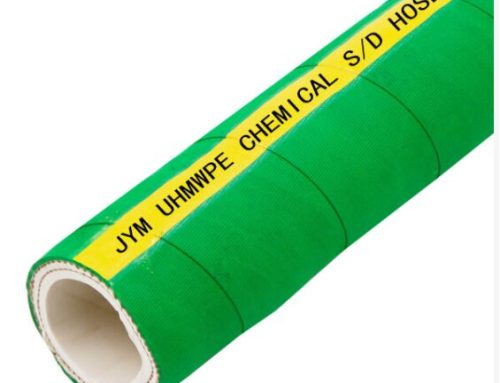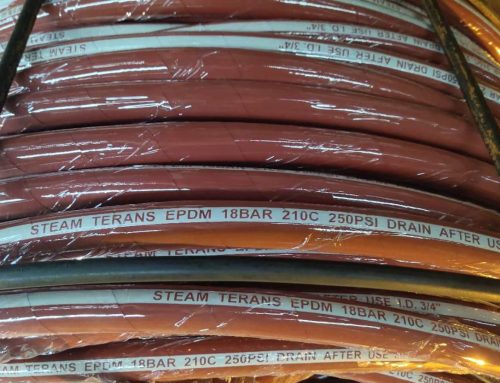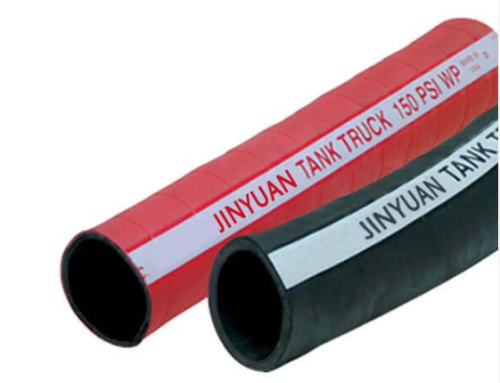A variety of chemical hose are manufactured for the chemical transfer industry, each designed to meet specific requirements of the transfer application. Making the proper selection is key to obtaining the optimum in safety and service life for the application.
Most hose manufacturers offer a variety of chemical hoses and chemical suction and discharge hose made of various materials in order to meet the requirements of a specific compound to ensure the safe and efficient transfer of each chemical media. There are number of key factors that must be considered for selection of the proper hose.
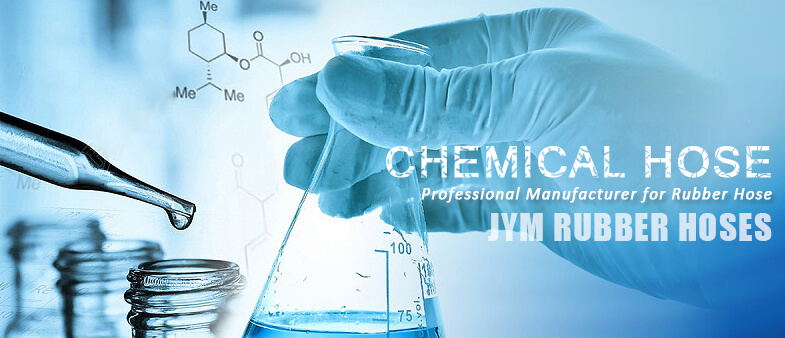
Chemical compatibility with media being transferred:
Always check the manufacturer’s chemical resistance chart, only use the chart provided by the hose manufacturers as different makers vary the compounding o make the hose.
Pressure media is transferred at (or vacuum rating):
Always verify the operating pressure. Note any pressure variances as they will affect the performance of he assembly. If application will be used for a vacuum it is important to note the inches of mercury required, if know.
Temperature of the media:
This is a critical area as elevated temperature can substantially degrade the performance of any rubber compound.
Static conductive properties required:
Most compounds transferred through a hose assembly will generate a static electric charge, if there are flammables(media being conveyed), the assembly should be static grounded and tested with an ohmmeter.
External operating conditions:
Outdoors, indoors, possible exposure to abrasion or high vibration; these factors should be taken into consideration to determine the proper hose covering are needed.
Other unique situations, such as how hose is plumbed, frequent bending required, tight bends needed, etc. should always be considered as well.
Hose Design
Chemical transfer hoses are typically designed with a minimum of 4 to 1 safety factor; burst vs. working pressure. For example; if the working pressure is 150 PSI for the hose and couplings, then the burst pressure would be 600 PSI (4 x 150). Hydrostatic testing should be used for this; always use water when testing hose. A “Best Practice” for chemical hose assemblies is to hydrostatic pressure test both prior to service, and periodically during the service life. Best procedure is detailed in the current RMA guidelines and the NAHAD (National Association of Hose and
Accessory Distributors) training materials. If the user does not have an inspection and testing program in place, it is strongly recommended that they investigate implementing one. This can guard against unexpected catastrophic hose failures. Most hose and fitting providers can assist with these programs.
Elevated operating temperatures will often reduce both the working and burst pressure of a hose assembly. It is therefore critical that the hose couplings and gaskets are also compatible with the operating criteria of the hose. In order to mitigate the risk of hose failure, coupling producers must have the necessary data to construct the couplings and gaskets to meet the needed operating criteria; couplings should always be installed by fully trained technicians.
Types of Chemical Hose
All of these methods are used to produce Chemical transfer hose today.
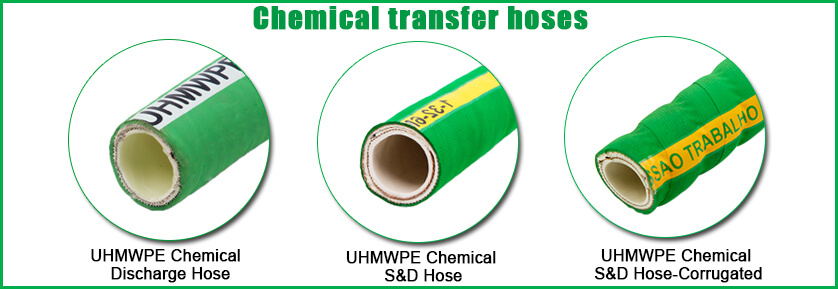
Each Industrial hose manufacturer uses their individual engineering process and product development to determine the type they will provide.
- Spiral Reinforced Rubber Hose, smooth or corrugated cover
- Horizontally Braided Rubber Hose, typically smooth cover
- Wrapped hose lining (lining is formed by being spiral wrapped around a mandrel)
- Extruded hose lining (seamless lining formed by extruded or pulled over a mandrel)
- Composite Hose, internal and external helix wires
- PTFE Lined SS Metal hose
- SS Lined Metal hose
The application information provided by the user will typically be used to determine which method may provide the optimum results in for the end user.
Appropriate Selection Process
Selecting the optimal hose for the required application is key to ensuring its safety and service life. To maintain the integrity of both the hose and application, it is beneficial to have the Industrial hose supplier and manufacturer assist with recommendations. These individuals have the required training and experience to provide valuable assistance the end user. It is another “Best Practice” to review existing chemical hose types which have been specified for service over a period of time (years) in order to determine if there are any new innovations available which can enhance performance or safety. These innovations include; new hose lining materials, static electric conductive hose lining, new abrasion resistant hose cover materials, increased working pressures, improved bend radius and/or kink resistance.
A recent innovation is the introduction of a fully static electric conductive hose (lining, cover, and couplings) assembly.
Most compounds transferred through a hose assembly will generate a static electric charge, if there are flammables (media being conveyed) the assembly should be static grounded and tested with an ohmmeter. This is accomplished by incorporating a conductive media into the cover and lining during the hoses blending and production. Attaching the crimper on the couplings completes the process as this will compress the hose, ferrule, and coupling insuring contact with all three components. In the past static conductive hose assemblies were provided by incorporating a wire, either stainless steel, copper, or carbon steel, sometimes using the internal helix, and bending the wire into the bore of the hose in order to contact the couplings. This method is not always effective long term as these wires can break or become separated from the couplings.
Prior to each use of a chemical hose assembly it should be inspected for:
- Kinks, cuts, gouges, loose hose cover (blisters), and soft pots
- Visually confirm the hose brand for intended service, working pressure, and temperature branded on the hose cover.
- Confirm the couplings are attached securely and needed gaskets etc. are in place and serviceable.
Final Thoughts
When choosing the proper hose for a chemical transfer application it is crucial that the specific manufacturers’ chemical reference guide be used; this applies to the hose, couplings, and gasket materials used in the couplings. Often common hose lining materials are compatible with chemical compounds however, the temperature, working pressure, coupling and materials are vital for a safe hose assembly.
Adopting a hose maintenance and tracking program long term will further help to insure safe and longer lasting service from chemical hose based upon manufacturers and industry recommendations.

